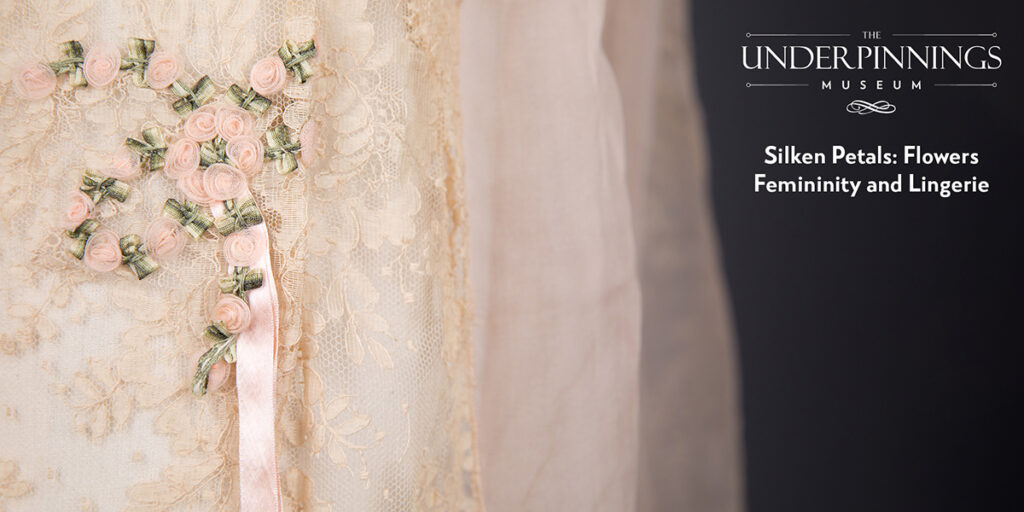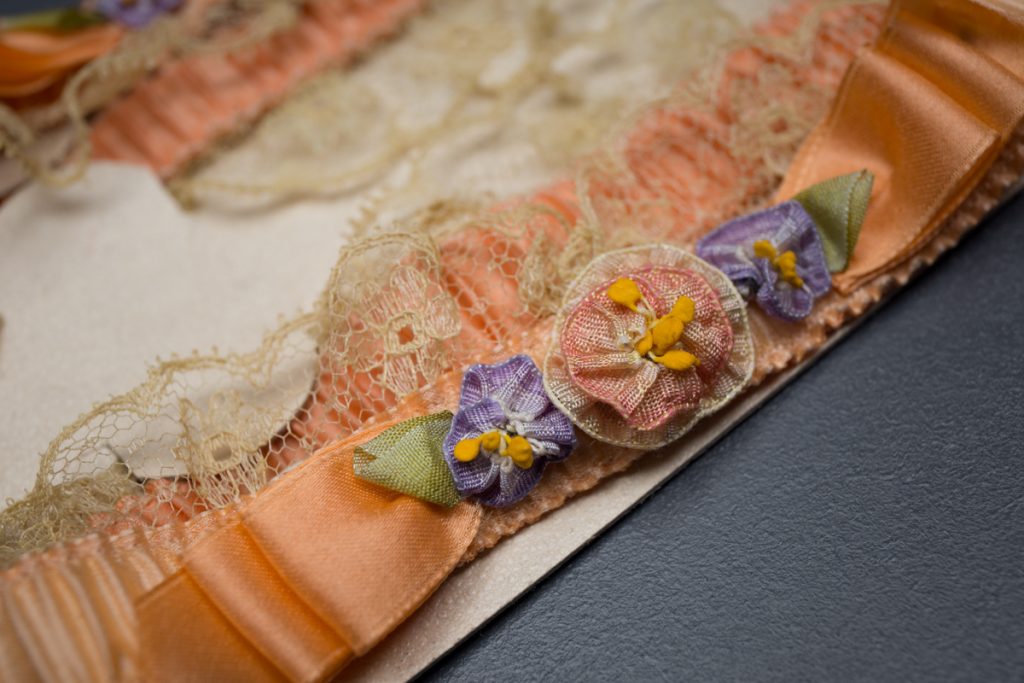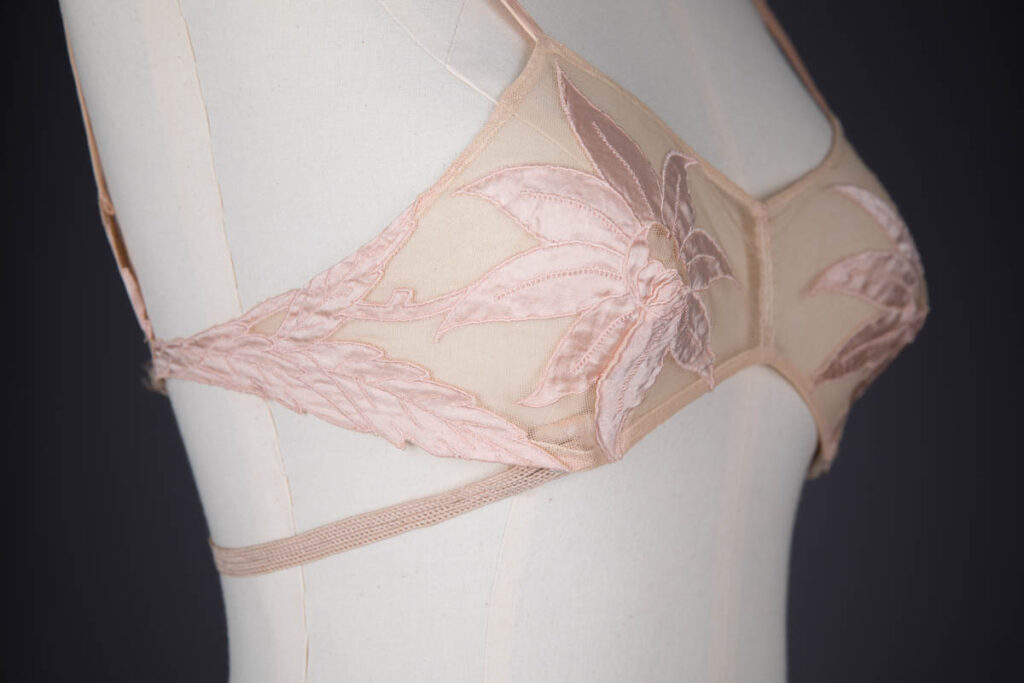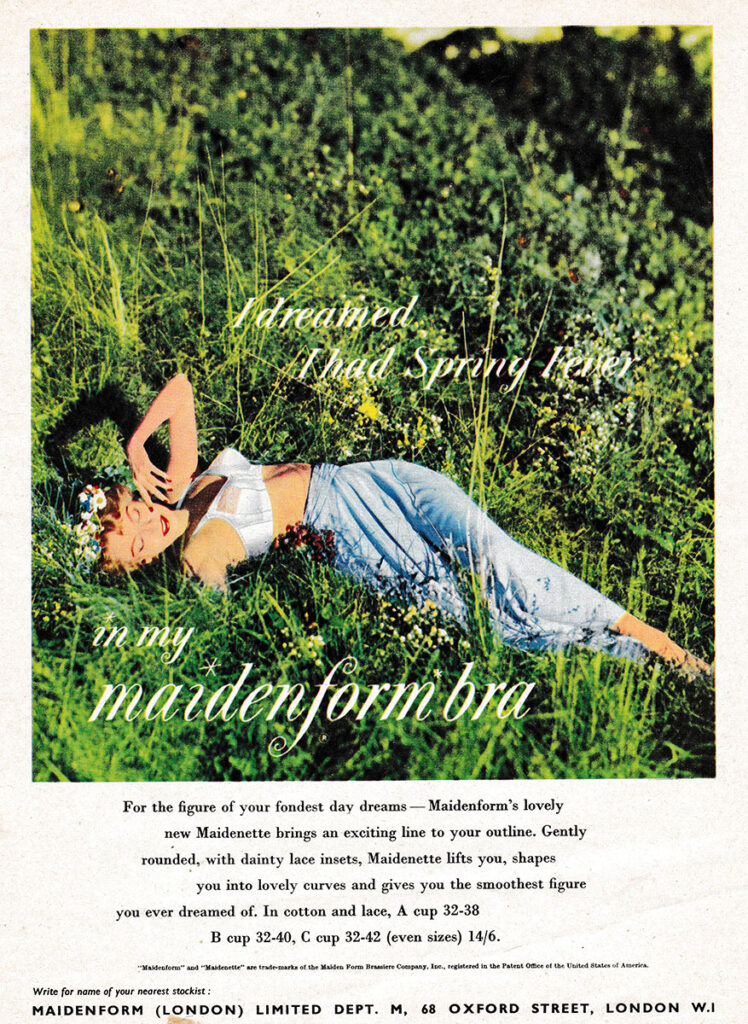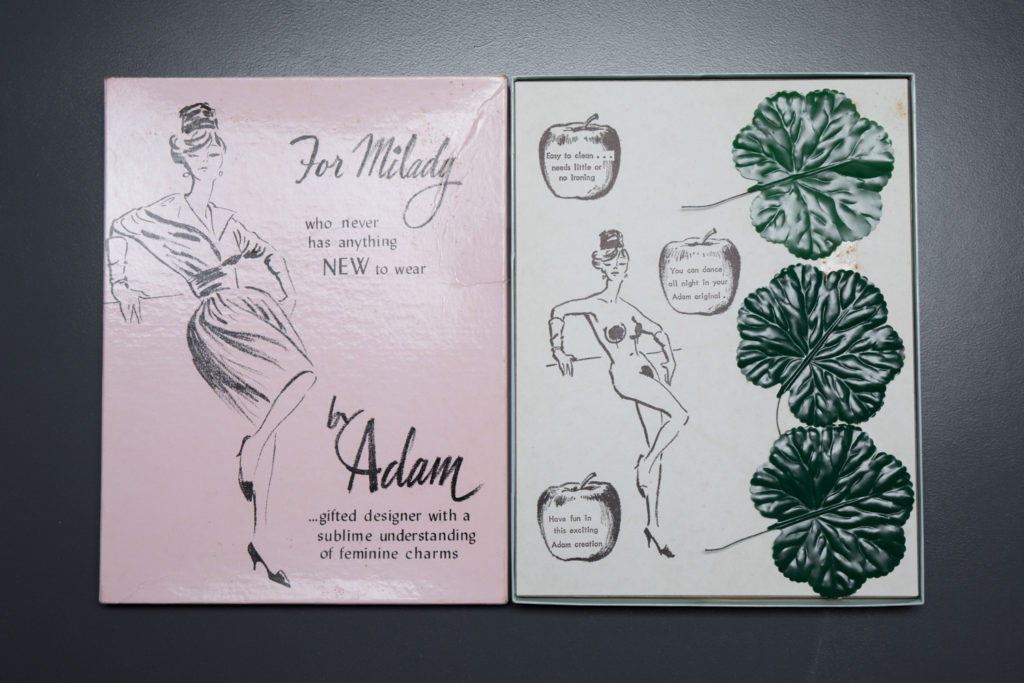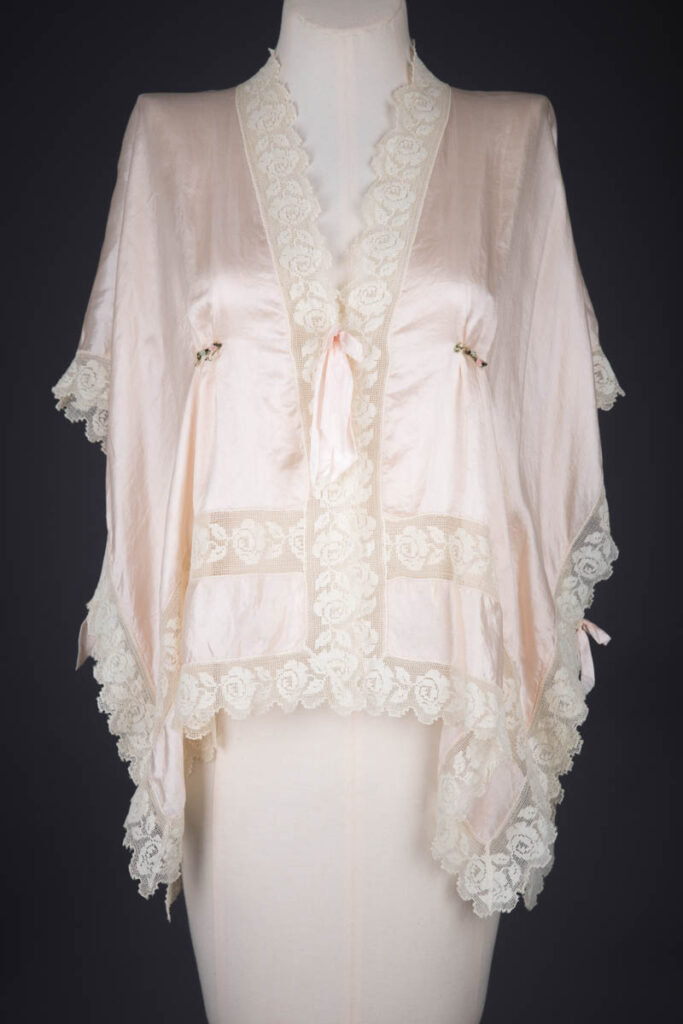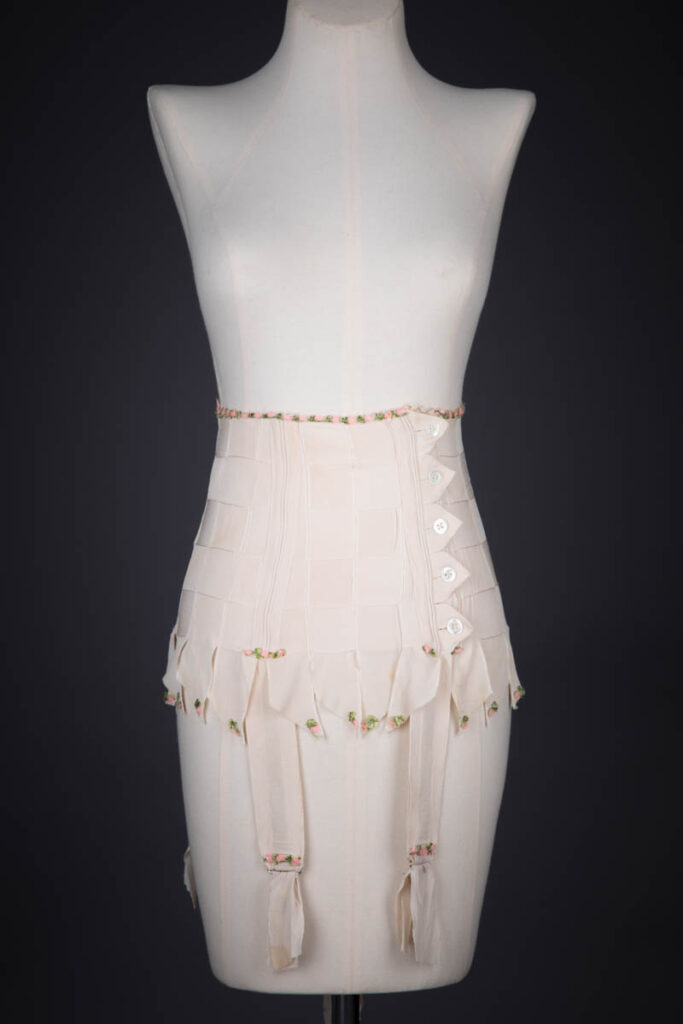Date: 2014
Origin: France
Fabric: Silk and leavers lace
Brand: Chantal Thomass
The ‘Rendez-Vous’ collection drew inspiration directly from 1930s lingerie detailing. This bra in particular is a very close replica of the original ‘Kestos’ style bra, with the same triangle cup shape and elastic strapping configuration. The knickers are a much more modern cut but still include nods to 1930s style lingerie and construction, including lace appliqué, gusseted and bifurcated patterning, narrow silk binding and ribbonwork embellishment. Both garments include contemporary construction techniques and fabrics, such as bartack stitching, lycra blend silk and nylon lining.
Chantal Thomass founded her eponymous lingerie label in 1975 and quickly became renowned for her flirtatious aesthetic and commitment to luxurious fabrics. In 1985 it was financed by Japanese group World, leading to an expansion into licensed lines of clothing, shoes, watches, scarves and swimwear amongst others, alongside lingerie. The label retained popularity and its trend setting reputation until 1995, when Thomass was made redundant by partner World. A year later the company went bankrupt and liquidated its assets. Thomass eventually reacquired the rights to her own name in 1998 and reentered the lingerie market in 1999.
Today, Chantal Thomass is one of the best known contemporary French luxury lingerie brands. The products have a strong market presence worldwide with a wealth of boutique and department store stockists, and a flagship boutique on the Rue St. Honoré in Paris. Alongside the lingerie, the brand also has ranges of umbrellas, hosiery and other accessories.
